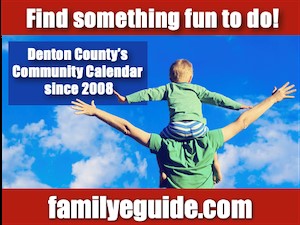When you’re ‘Living on Tulsa Time,’ there’s no limit to what you can do. Whether you’re looking for a fun vacation or a quick weekend getaway, Tulsa has something for everyone. It has a fascinating history and amazing architecture, family-friendly adventures, interactive experiences, a great restaurant scene, and an award-winning world-class park. Tulsa’s topography is beautiful, with four distinct seasons, an average of 227 sunny days per year, and…it’s only a 4-hour car ride from the DFW Metroplex.
Did you know that Tulsa was once the ‘Oil Capital of the World?’ By 1920 things were changing fast, and the small town of Tulsa suddenly burst into a big oil boom town. Many of the communities surrounding Tulsa contained oil fields, but the city of Tulsa is where business was conducted and money exchanged hands. The growth was visible as the skyline blossomed and the population doubled. Tulsa was suddenly home to 400 petroleum companies, two daily newspapers, and seven busy banks. There were many successes and fortunes made here in the oil industry, for over 5 decades. There was tremendous wealth as you can still witness today. By the time of Oklahoma’s statehood in 1907, Glenpool, one of the nearby communities, had made Oklahoma the nation’s largest oil producer. It was Oklahoma’s first major oil field and the richest field the world had ever seen. Many prominent petroleum industry figures built their empires here, including Harry Ford Sinclair, J. Paul Getty, and the Phillips brothers. It is said that more money was made on the Glenpool oilfield than the California gold rush and Colorado silver rush combined.
You can learn all about Tulsa’s intriguing past, present, and future with Tulsa Tours. From dirt roads to oil barons, learn how Tulsa became one of the most important places in the world. Discover why and how Tulsa became the Oil Capital of the World, see monumental art-deco architecture, walk through connecting tunnels, and saunter through historic downtown neighborhoods. Tulsa Tours does an excellent job of presenting all these stories in a fascinating way that brings history to life.
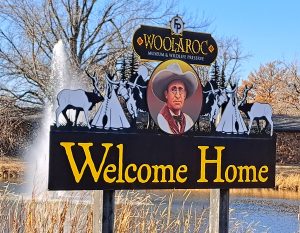 One of the famous families of the booming oil industry was the Phillips brothers; Frank, Lee, and Waite. They are known because of their fortune from the massive oil strike in nearby Bartlesville. This later became the Phillips 66 Petroleum Oil Company. Hidden away in the rugged Osage Hills of Northeastern Oklahoma, is the ranch retreat of oilman Frank Phillips established in 1925. He named it Woolaroc Preserve and Museum. His mission with Woolaroc was to preserve the West’s history, educate and entertain, and you can tour it today. The ranch is a 3,700-acre wildlife preserve, home to many species of native and exotic wildlife, such as bison, elk, and longhorn cattle. The Woolaroc Museum is also surprisingly large and very impressive with an outstanding collection of Native American and Western art and artifacts, one of the world’s finest collections of Colt firearms, and so much more.
One of the famous families of the booming oil industry was the Phillips brothers; Frank, Lee, and Waite. They are known because of their fortune from the massive oil strike in nearby Bartlesville. This later became the Phillips 66 Petroleum Oil Company. Hidden away in the rugged Osage Hills of Northeastern Oklahoma, is the ranch retreat of oilman Frank Phillips established in 1925. He named it Woolaroc Preserve and Museum. His mission with Woolaroc was to preserve the West’s history, educate and entertain, and you can tour it today. The ranch is a 3,700-acre wildlife preserve, home to many species of native and exotic wildlife, such as bison, elk, and longhorn cattle. The Woolaroc Museum is also surprisingly large and very impressive with an outstanding collection of Native American and Western art and artifacts, one of the world’s finest collections of Colt firearms, and so much more.
Will Rogers once said, “When you are visiting the beauty spots of this country, don’t overlook Frank Phillips’ ranch and game preserve in Bartlesville, Oklahoma. It’s the most unique place in this country. If there is one last under-discovered treasure left in the United States, it surely must be a place called Woolaroc.”
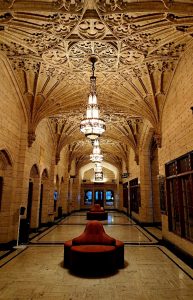 Frank Phillips’ beautiful, Neo-Classical home in downtown Bartlesville remains almost entirely unchanged since Uncle Frank, as locals call him, lived there and offers visitors the amazing opportunity to experience life as one of Oklahoma’s most prominent families. Frank’s brother Waite, moved south to Tulsa and built a spectacular 1920’s mansion, Villa Philbrook, which is now the Philbrook Museum of Art. It is an impressive art museum that has numerous exhibits from European, American, Asian, Native American, and African artists from around the world. The villa is surrounded by acres of lush gardens including a brook. This is an amazing and beautiful place…and to imagine this was once someone’s home. The mansion is magnificent, in addition to the art.
Frank Phillips’ beautiful, Neo-Classical home in downtown Bartlesville remains almost entirely unchanged since Uncle Frank, as locals call him, lived there and offers visitors the amazing opportunity to experience life as one of Oklahoma’s most prominent families. Frank’s brother Waite, moved south to Tulsa and built a spectacular 1920’s mansion, Villa Philbrook, which is now the Philbrook Museum of Art. It is an impressive art museum that has numerous exhibits from European, American, Asian, Native American, and African artists from around the world. The villa is surrounded by acres of lush gardens including a brook. This is an amazing and beautiful place…and to imagine this was once someone’s home. The mansion is magnificent, in addition to the art.
Unfortunately, there is also a very tragic event in Tulsa’s history known as the ‘Tulsa Race Massacre of 1921.’ A new eye-opening museum, called Greenwood Rising, is now open in downtown Tulsa. Greenwood Rising Museum is dedicated to educating the public about the horrific Tulsa Race Massacre that happened over 100 years ago in the Greenwood District. This museum utilizes history, technology, and interactive design to open a dialogue of challenging conversations about the tragedy while also discussing black history and the heritage of historically Black North Tulsa – specifically, the Greenwood District. It is very educational, insightful, and sobering. Tickets are free to the public but reserved time slots must be secured before going to the museum.
Tulsa is also the Capital of Route 66. Here this fun 28-mile stretch of the famed historic highway is where visitors, from the USA and around the world, still travel and experience many classic icons. There’s a lot to see on the original Mother Road, but my favorite is the Mother Road Market. This is a huge building that has a sprawling array of unique dining and shopping options and even a breezy back-of-house patio with a variety of family-friendly games and activities.
One of the iconic Tulsan landmarks is the Blue Dome. This place once served travelers along Route 66 as a 24-hour gas station. It’s now known as Blue Dome District and represents an active district for eating, drinking, shopping, or dancing. It’s a great destination to fuel your evening of fun. Just a few blocks away in the Arts District inside the historic Archer Building is LowDown Music Club. This is Tulsa’s premier live music club, with something going on nearly every night of the week. LowDown has endless opportunities to hear renowned local and national musicians. This underground jazz club was designed, excavated, and constructed to be a listening room. It has excellent acoustics, delicious drinks, and great service. We love the speak-easy vibe and ambiance. If you enjoy live music, this is the place to go!
Nearby, is another music-themed Tulsa treasure and one of my favorite places. Here you will find the Woody Guthrie Center. The Woody Guthrie Center opened in 2013 and is set to celebrate its 10th year anniversary the first weekend in May. The center is dedicated to spreading Woody Guthrie’s message of diversity, equality, and justice to all generations. Here is where they honor Guthrie’s life and his legacy by educating visitors, teachers, students, and scholars about his relevance today and his important role in American history as he simply said, “The People are the Song.”
At the center, we learned Woody Guthrie was born in Oklahoma in 1912, and is known as one of the greatest folk and country singers of all time. He was one of the most significant musicians in American Folk Music because of his life experiences and ability to focus and communicate on the struggles of farmers, workers, and anti-fascism. Guthrie inspired many generations both politically and musically and was a prolific singer-songwriter as you will witness at the center. He wrote ballads and hundreds of country, children, and folk songs. Guthrie’s ‘Dust Bowl Ballads’ have been said to have changed the world. The Library of Congress has archived many of his recorded songs. Countless songwriters have acknowledged that Woody Guthrie was a major influence on their music including Bob Dylan, Johnny Cash, Bruce Springsteen, and John Mellencamp. Guthrie’s most famous song is “This Land is Your Land” which has become such an important part of American culture and continues to inspire people today. Woody Guthrie died, at age 55, from Huntington’s disease in 1967.
Next door is the Bob Dylan Center which is now the official home of more than 100,000 items spanning Dylan’s life and career. This world-class center houses and exhibits exclusive cultural works created and owned by Bob Dylan over seven decades. These include handwritten lyric manuscripts to some of the world’s most treasured songs, previously unreleased recordings, never-before-seen film performances, and even rare and unseen photographs. The visual art and other priceless items span Dylan’s unparalleled career and why he is known as one of the world’s most important cultural figures. Even though Dylan is a Minnesota native – he and his music were greatly influenced by Woody Guthrie, and the two centers are purposely side by side. “I’m glad that my archives, which have been collected all these years, have finally found a home and are to be included with the works of Woody Guthrie. To me, it makes a lot of sense and it’s a great honor.” – Bob Dylan.
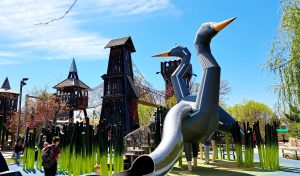 And one more reason to visit Tulsa -The Gathering Place. This concept and place are simply amazing and such an asset to the city of Tulsa. It’s alongside Riverside Drive covering over 100 acres. This is the brainchild of George Kaiser, a local multi-billionaire and an iconic philanthropist. This impressive public park cost right at one-half billion dollars. The Gathering Place gives guests a one-of-a-kind experience with creative, whimsically designed playgrounds, gardens, and trails. There are also, boat rentals, restaurants, outdoor concerts, activities, events, programs and so much more! It’s a natural space designed to provide inclusive and engaging experiences for all ages to explore, learn, and play. You will not want to go home!
And one more reason to visit Tulsa -The Gathering Place. This concept and place are simply amazing and such an asset to the city of Tulsa. It’s alongside Riverside Drive covering over 100 acres. This is the brainchild of George Kaiser, a local multi-billionaire and an iconic philanthropist. This impressive public park cost right at one-half billion dollars. The Gathering Place gives guests a one-of-a-kind experience with creative, whimsically designed playgrounds, gardens, and trails. There are also, boat rentals, restaurants, outdoor concerts, activities, events, programs and so much more! It’s a natural space designed to provide inclusive and engaging experiences for all ages to explore, learn, and play. You will not want to go home!
We love the Gathering Place and are obviously not the only ones. The Gathering Place was voted USA Today’s Best City Park in 2021; Best New Attraction in 2019; ULI Global Award of Excellence; National Geographic’s 12 Mind-bending Playgrounds Around the World; TIME Magazine’s 100 Best Places to Visit; and TIME Kids Magazine’s Worlds Coolest Places. Oh…and I forgot to mention, it’s free!!! Tulsa is so fortunate to have such a gift for the people…every city should be so lucky!
There are truly so many treasures to be discovered in Tulsa.
Terri Guthrie is a member of the Society of American Travel Writers.
Follow Terri on Social Media @travelwithterri


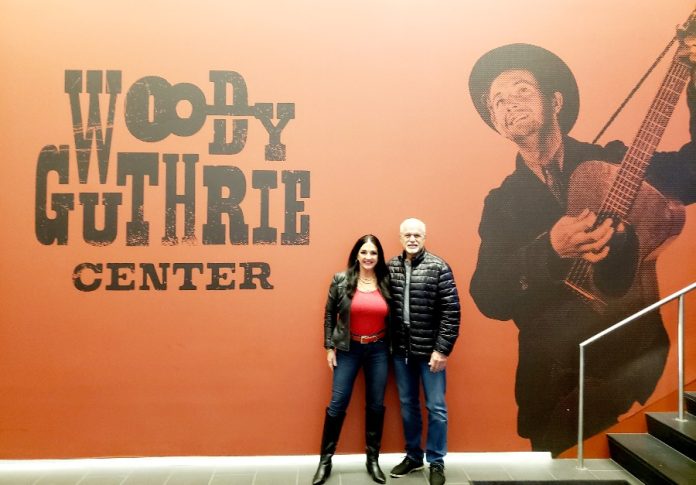








.jpg)

.jpg)
